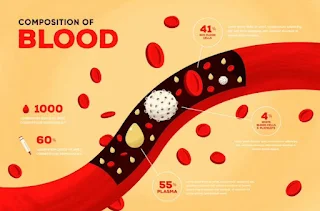Today, we're diving into the fascinating world of Veterinary Hematology. It's not just about those Rh factor cells; blood is a powerhouse of activity, doing way more than just carrying metabolites and waste products around. We've got four major players here: Plasma, Red Ancestry Cells, White Blood Cells, and Platelets.
Unraveling the Wonders of Plasma
Plasma, my friends, is where it's at! It's a dynamic mix of proteins, salts, and various goodies. Not only does it maintain fluid and electrolyte levels, but it also transports essential substances throughout the body. Ever wondered about those gasses left over from the respiratory exchange cycle, like CO2? Well, plasma handles that too!
Platelets: The Clotting Heroes
Meet the platelets, the real superheroes of clotting! These tiny fragments step up to the plate when there's an injury, working together to form those vital clot alliances. They're not only crucial for healing wounds but also serve as diagnostic clues. Platelet morphology and other data can provide essential insights into inflammation disorders and leukemia.
Red Blood Cells: The Oxygen Couriers
Now, let's talk about the good ol' Red Blood Cells. These humble cells have one vital mission - transporting oxygen to all the tissues and carrying waste products away. Without them, anemia sets in, and trust me, that's not a good time for any mammal. We'll explore how to identify the cause of anemia and refine treatment for our furry friends.
White Blood Cells: Your Body's Warriors
White Blood Cells are the defenders of the body, the brave warriors fighting infections and diseases. When they leave the bone marrow and enter the bloodstream, they're on a mission! There are different types of white blood cells, each with its own unique role. We've got the neutrophils, eosinophils, basophils, monocytes, and lymphocytes.
The Neutrophil: Frontline Fighters
Neutrophils are the foot soldiers, always ready to take on infections. They have some cool-looking granules in their cytoplasm, giving them a multilobed appearance. When they arrive at the site of an infection, they initiate phagocytosis, where they gobble up offending cells. But hey, all this action takes a toll on them, and they die in the process, leaving behind pus.
The Eosinophil: Colorful Parasite Busters
These vibrant cells are all about tackling parasitic worms and organisms. Their granules contain a substance called MBP, which is toxic to many parasites. You'll find an increase in eosinophils when there are itchy conditions or allergic reactions. They're like the pest controllers of the body!
The Basophil: Allergic Reactions and More
Basophils, on the other hand, are more elusive in peripheral blood smears of our furry pals. They've got large granules that usually obscure their nucleus. Basophils play a role in allergic responses, releasing histamines and causing all sorts of trouble. Remember, too many basophils can lead to hay fever, asthma, and even anaphylactic shock!
The Monocyte: The Cleanup Crew
Monocytes are the largest cells in peripheral blood smears, and they're pretty versatile. They turn into tissue macrophages, cleaning up dead cell debris and taking on organisms and fungi that resist neutrophils. Unlike the short-lived neutrophils, monocytes have longer lifespans, and they play various roles in different tissues.
The Lymphocyte: The Defenders of Immunity
Ah, the lymphocytes, defenders of immunity! We've got different types, such as the small lymphocytes, killer T-cells, and B-lymphocytes. These guys help fight viral infections and play a vital role in our immune response. They're pretty unique with their deeply staining nuclei and relatively small cytoplasm.
Understanding Anemia: When Hematocrit Levels Drop
Anemia is a condition where the hematocrit level drops below normal. It's essential to figure out the underlying cause of anemia, and we've got four main types: consumption, production, destruction, or sequestration. By examining the variation in size, shape, and color of red blood cells, we can get a better idea of what's going on and provide the right treatment.
Alright, that's a wrap on our crash course in Veterinary Hematology! Remember, understanding blood is crucial for any clinician, and it can make a world of difference in the care we provide for our furry patients. So keep exploring, keep learning, and let's make a positive impact in the world of veterinary medicine!

